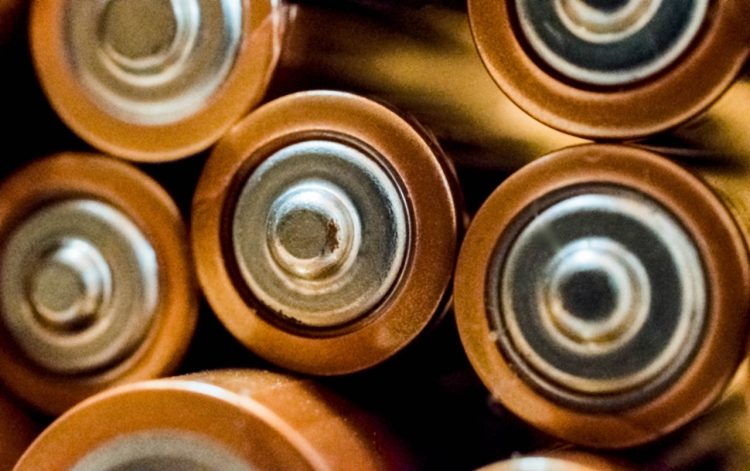Tips for Storing Electronic Devices
Keeping Electronics Safe When Not in Use
Electronics are some of the most fragile pieces of equipment. These devices can be easily damaged by any spillage, applied force, or even a slight fall. But how can you store your devices while decluttering at the same time? The tips for storing electronic devices that you do not use often, as outlined below, are specifically dedicated to helping you solve this problem!
By following these tips, you can keep your electronics safe and in good condition while they are not in use. This will not only prolong their lifespan but also make it easier for you to declutter and organize your space effectively.

Photo by Polina Zimmerman from Pexels
Declutter Your Electronics
Decluttering your electronics is an essential step in storing them effectively. It allows you to keep only what is necessary and save on space. When deciding which electronics to dispose of, it’s important to be honest with yourself and consider valid reasons for getting rid of them.
One option to consider before disposing of your electronics is updating their software. This can make them usable again, even if they have limited storage. For example, if you have a Macbook with insufficient storage to install updates, there are ways to clean your storage and optimize your gadget for use.
If you are unable to repair your electronics or find a way to make them functional again, it’s important not to simply throw them in the trash or destroy them. Instead, you can explore other options such as selling them at garage sales or online markets. Additionally, consider donating them to charitable organizations that may be able to make use of them.
By decluttering your electronics and making thoughtful decisions about what to keep and what to dispose of, you can create a more organized and efficient storage system for your devices.
Clean Your Devices
Dust and other contaminants can damage your electronics, mainly during storage. For this reason, it is essential to clean your devices thoroughly before packaging them. Start by removing any dirt, cobwebs, and dust from the surfaces of your electronics. Use a soft, lint-free cloth or a microfiber cloth to gently wipe away any debris.
In addition to cleaning the exterior, it is also important to clean the internal components of your devices. Remove the batteries and clean the battery holder to eliminate any potential spillage that may have occurred. Use a cotton swab or a soft brush to clean small passages and vents, ensuring that they are free from dust and debris.
For more stubborn dirt or dust particles that are stuck in the internal hardware, consider using compressed air. This can help dislodge and remove any particles that may be causing issues. Be sure to follow the manufacturer’s instructions when using compressed air and avoid spraying it directly onto sensitive components.
By taking the time to clean your devices before storing them, you can help prevent damage caused by dust and contaminants. This will ensure that your electronics remain in good condition and are ready for use when you retrieve them from storage.

Photo by Terje Sollie from Pexels
Export Data to Avoid Loss
Data security is one of the primary considerations while storing data. You do not want to lose your favorite memories or essential documents in case your electronics fail. Computers and cameras especially, among other portable digital devices, hold crucial data. Before storing these gadgets, evaluate the data that is present.
Also, double-check your data to make sure you have exported all your essential files to external storage like a hard drive. Backing up data is a preventive measure that can help you recover data if the gadget fails or the storage drives cease functioning.
Most electronics come with different pieces, which are assembled into one working unit. These devices may include the central unit, physical media, and accessories such as controllers, charging wires, power cords, and input and output cables. When storing these devices, separate these pieces to avoid damage if connected to the device.
Exporting data will also increase the space for the central unit inside the storage device. However, after separating these accessories, make sure you can label these pieces for easier identification. Cables can seize in their sockets when storing devices for long periods. Be sure to remove all cables from your devices before storage and store them separately. It would be better if you curled the cables into a loop to avoid damage.
Cover The Screen and Monitors
Screens and monitors are delicate components of electronic devices that require extra protection during storage. They are susceptible to breaking, cracking, and scratching when exposed to external forces. Additionally, condensation and moisture can cause irreversible damage to screens and monitors. To safeguard these vulnerable parts, it is crucial to cover them adequately.
One effective method is to use cotton or canvas materials to cover screens and monitors. An old t-shirt or bed sheet can serve as a protective barrier against potential damage. These materials provide a soft and cushioned layer that helps prevent scratches and absorbs impact.
For smaller devices like smartphones, portable gaming consoles, and tablets, it is advisable to use screen protectors or laminated glass. These transparent shields act as an additional layer of defense, shielding the screen from scratches and cracks. Alternatively, if you still have the original box for these devices, placing them inside can offer optimal protection.
By covering screens and monitors with appropriate materials or using screen protectors, you can significantly reduce the risk of damage during storage. This precautionary measure ensures that your electronic devices remain in pristine condition, ready for use when you retrieve them.

Photo by Stas Knop from Pexels
Cover the Gadgets with Bubble Wrap
When it comes to storing your electronic devices, adding a layer of bubble wrap can provide an extra level of protection. While not necessary, it can help safeguard your gadgets from potential damage. Consider using antistatic bubble wrap (<– affiliate link!), which is specifically designed to protect delicate electrical components from shock.
It’s important to note that plastic sheets should be avoided when covering your electronic devices. Plastic sheets have a tendency to trap moisture, which can be detrimental to your gadgets, especially during long-term storage. Moisture can lead to corrosion within a matter of months, causing irreversible damage. Instead, opt for materials like cotton or canvas to cover your devices.
To further protect your gadgets from excess humidity, it’s advisable to include several sachets of silica gel in the storage area. Silica gel helps absorb moisture, keeping your devices dry and safe. This simple precaution can go a long way in preserving the functionality and lifespan of your electronic devices.
By covering your gadgets with bubble wrap and avoiding plastic sheets, you can provide an additional layer of protection against potential damage. Remember to include silica gel to reduce excess humidity and ensure your devices remain in optimal condition during storage.
Remove Batteries
You may find that some of your electronic gadgets still use alkaline batteries as their power source, and they will need to be removed prior to storage. In such a case, the batteries lead to leakage of potassium hydroxide, which may corrode your electronics over time especially if they aren’t being used. This leakage can cause severe damage to circuits, and the corrosive substance may eat up the wires and cause damage to the circuit board.
Also, if you remove the batteries, make sure you do not store them in the same storage container as your other devices. Instead, keep them on their own to avoid the battery acid from spilling. Preferably, it would be best to discard the old ones, especially the alkaline ones, and buy new ones the moment you resume using your device.
If your gadgets use lithium batteries, there is no need to remove them from the device. Generally, they do not leak, and they are safer and more durable for use. These properties make them most suitable for long-term storage. When storing electronics with lithium batteries, place them in a cool and dry place away from heat. Also, keep the batteries charged for approximately 50%-70% capacity before storage.

Photo by Hilary Halliwell from Pexels
Organize the Gadgets While Taking Inventory
Before storing your gadgets in your preferred storage facilities, sort them based on size, type, length, and build quality. After sorting your electronics, it would be best to take an inventory which will act as a reference when you need to pull out electronics in the future. It will also help you to identify missing gadgets and make it easier to retrieve them when needed.
Where possible, use the original packaging for large electronic devices. If you are storing speakers, laptops, and TVs, among other large appliances, consider using the original packaging for extended storage. These boxes are secure, preventing impact damage. If you cannot find the packaging, use the most appropriate containers or boxes to enhance your device’s security, like this Norway credenza.
Conclusion
One of the ways to make home improvements is by decluttering and storing some of the items you do not use often. However, poor storage, especially for electronic devices, may cause damage so use discretion when putting these items away for an indefinite period of time.
Electronic devices are sensitive, and they need to be handled with care. By following the tips above, you will prevent your devices from damage and ensure they are in good condition once you remove them from storage.
Featured Photo by Karina Zhukovskaya from Pexels

